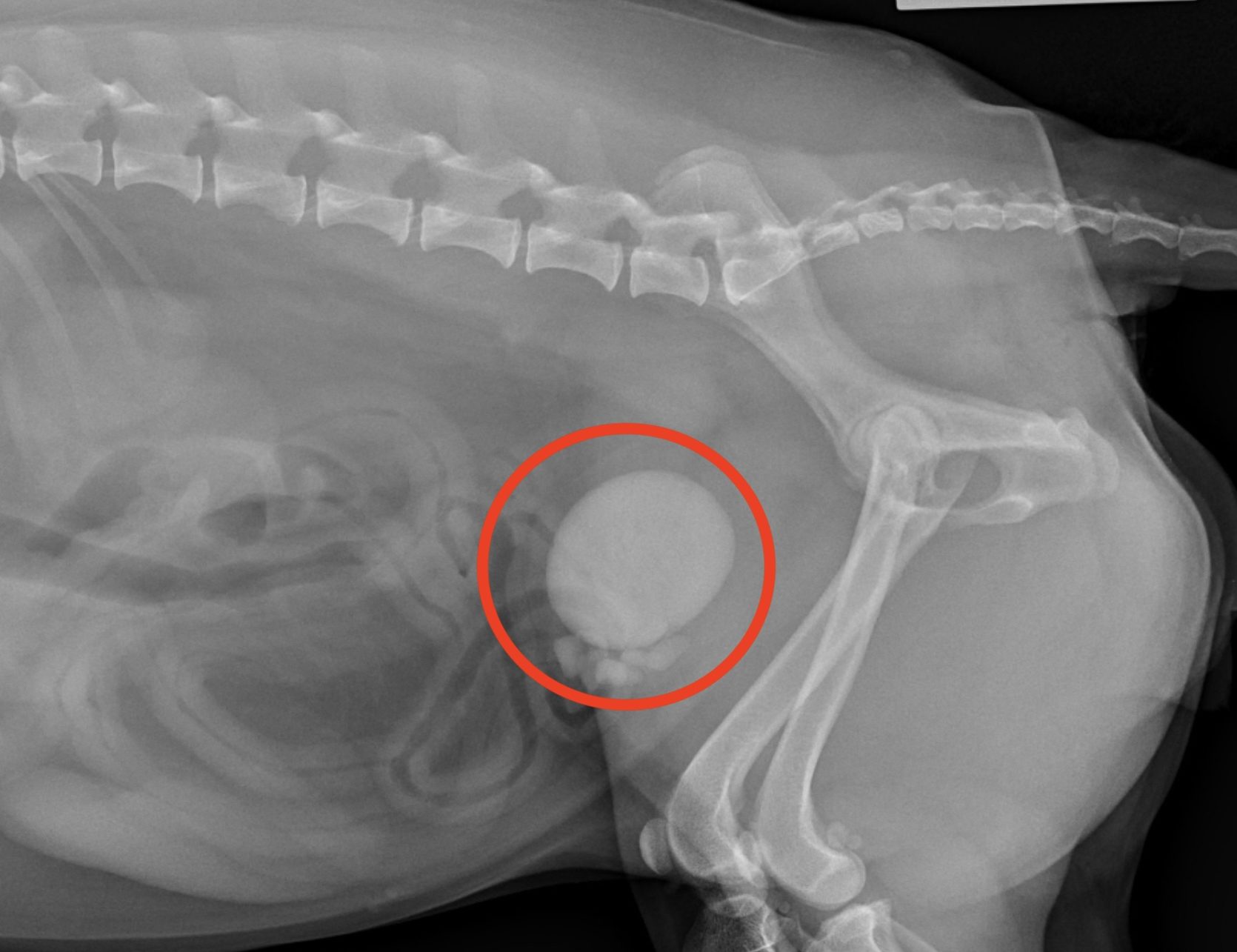Painful Bladder Stones
By Kay Hisano | Dated April 15, 2025
If you’ve ever noticed your dog straining to urinate or passing blood-tinged urine, you might wonder what’s causing their discomfort. This can be caused by urinary tract infections, cystitis (bladder inflammation), bladder stones and many more.
At Gordon Vet Hospital, we recently treated Lilly, a six-year-old Bichon Frise, who was experiencing similar symptoms. Lilly’s owners brought her in, after noticing she was urinating frequently but only passing small amounts of urine, often tinged pink. During the physical exam, Dr. John was able to feel stones inside Lilly’s bladder—a strong indication that she had bladder stones. This was confirmed on radiographs.
You can see the large stone that takes up her entire bladder on the radiograph below.

Screenshot
Bladder stones, or uroliths, are mineral formations that develop in the bladder due to various factors, including diet, infection, and genetics. The most common types of bladder stones in dogs include:
- Struvite Stones: Often associated with UTIs, these stones form in alkaline urine and are composed of magnesium, ammonium, and phosphate.
- Calcium Oxalate Stones: More common in certain breeds, these stones form in acidic urine and typically require surgical removal.
- Urate Stones: Seen more frequently in Dalmatians and dogs with liver issues, these stones develop due to a genetic predisposition.
- Cystine Stones: A rarer type, these occur in dogs with an inherited metabolic condition.
Treatment will vary depending on the type and size of the stones.
For Lilly, given the size of her stones Dr. John recommended a cystotomy, where an incision is made into the bladder to physically remove the stones . Lilly is able to now urinate much more comfortably and back to her happy self.
